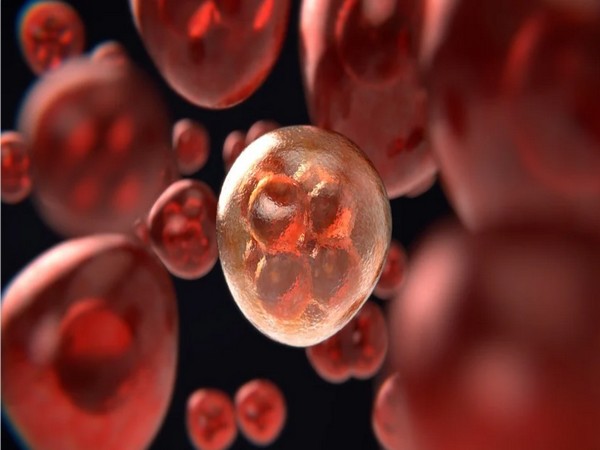
Washington [US]: Researchers at the University of Colorado Anschutz Medical Campus and their international collaborators have discovered that a protein critical in the embryonic stages of life is reactivated in certain cases of mesothelioma, offering clues into the origin of this aggressive cancer. The study was published in the journal Nature Communications.
"Together with our basic research and clinical collaborators, we have discovered that in numerous mesothelioma tumours, the Hand2 protein has been turned back on, possibly altering the cells of the tumour," said Christian Mosimann, lead author of the study and associate professor of paediatrics in the section of developmental biology at the University of Colorado School of Medicine on the CU Anschutz Medical Campus.
"Now we're investigating what causes this and what makes such mesothelioma tumours different from tumours that do not have Hand2 present." Mesothelioma is aggressive cancer that occurs in a thin layer of tissue called the mesothelium, which covers most internal organs. Its primary cause is exposure to asbestos. The Hand2 protein, Mosimann said, binds to genes at the beginning of life to control them during cellular development. It usually goes dormant in many tissues after an embryo fully develops. The discovery that the protein reactivates in some cases of mesothelioma offers the chance to possibly manipulate it to influence the course of the disease.
Mosimann and his team are using zebrafish to study how different cell types form because their translucent nature helps them observe the entire course of cell development rapidly due to how fast the fish grow. Specifically, they have been observing the mesothelium, a membrane that already develops in the embryonic stage and covers the heart, abdomen, intestines and inner organs, such as the lungs in humans. Mosimann described the mesothelium as protective shrink-wrap that protects the inner organs.
The team's work now showed that the Hand2 protein helps in the first formation of the mesothelium in the embryo. The researchers then observed that mesothelioma tumours in adults can re-activate Hand2, possibly enabling these cells to grow and move as they did in the embryo.
Mesothelioma tumours, which sometimes appear decades after asbestos exposure, have been a mystery to medical professionals. This has made treatment challenging and the prognosis is usually fatal within a year of the diagnosis."What has become apparent over time is that the dust asbestos produces is dangerous as it is made of a material that the body cannot break down. It can stay in your system and get lodged into your major organs like the lungs or heart," Mosimann said.
Asbestos is a mineral found in many construction and mining environments. Mosimann said many countries continue to use asbestos in building materials, making mesothelioma a global health concern. "Mesothelioma tumours also remain a particular concern in Colorado because of all of the years of mining and construction operations that have taken place in the state," he said. The next step for Mosimann's team is to find out if they can influence the Hand2 protein and eventually create better treatments and therapeutic benefits in certain cases of mesothelioma without impacting other cellular functions. They will also study why not all cases of cancer involve Hand2.
By continuing to observe zebrafish and using them to clarify where cells come from and what makes them tick, Mosimann and his team not only hope to discover new insights into mesothelioma tumours but also into the causes of congenital problems with the mesothelium when an embryo first develops. "This could also eventually lead to better diagnosis and treatment for children who are born with conditions like congenital herniation and heart disease," he said. (ANI)







